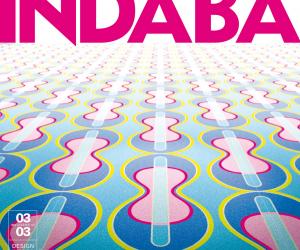First Published in
For those of you lacking the finer points of education (like me), I've boned up on this subject. Inductive reasoning is where you work from specific observation to general conclusions: so you say "every time I put a roll of film through the X-ray machine it comes out fogged, therefore X-rays may damage film".
Deductive reasoning would have you work from general laws and apply them to determine what will happen in the specific instance. So you might conclude: "X-rays are known to damage film, therefore it will fog the film if I take the security officer's advice and put my precious shoot through this machine."
At this point you might be wondering if my words would not sit better in an early chapter of Logic For Dummies. However, bear with me. Good things come to those who wait. My observations on induction and deduction are merely preparation for your critique on my new discovery: a third form of logic, one particularly developed for the creative process and apparent in much of what surrounds us.
This new form is what I call Reduction. It's so obvious that you might assume I am just stating platitudes, but then it might also reassure you as to how to give creative thought some structure and methodology.
Reduction is my new tag for the theory, but it is captured in epithet form by the famous (and still controversial) comment by arch-modernist architect Mies van der Rohe: "Less is more". It's also lurking inside that irritating saying "keep it simple, stupid"."
Reductive reasoning is how creative communications - from fashion photography through all kinds of ads to the various forms of design, including architecture - give themselves form. To make an effective ad you need a single-minded proposition; for outstanding design you need a clear-sighted brief and a focus on innovation; and for a great image you need to clear away the infinite possibilities of crafting a picture and instead almost monomaniacally devote yourself to delivering the very particular vision in your mind's eye. To do all and any of these effectively requires powerful reductive reasoning.
This will come as no surprise to many of you. The point of focusing on it today is that the fierce focusing logic of reductive reasoning, of "less is more", is in a constant battle with the forces of chaos. It is the nature of creative thinking that you must explore new possibilities, examine new ways of doing things. So the modernist like rules of "less is more" thinking are regularly in counterpoint with "more is more" - whether it is the focus of the Renaissance modulating to the Rococo over three centuries, or whether it is geometric bold fashions switching to eclectic prints across the catwalks in two seasons.
Right now I suggest we are about to see one of those swings in the creative communication area. Here movements are slower than fashion, but faster than architecture. For some time the 'digital revolution' has led the focus to be on visual style exploration that celebrates the new technology, whether overtly or subtly. Process play has been all around us. Now I detect we have got that message. So what next? Next - time to clear away the clutter of complex "style over content" and return to reduction. Refocus on the basics. And that will mean transparently and rigorously demonstrating that you have a big idea worth noting. In a picture that could mean style shifts as simple as the power of portraiture, or the stripping down of the colour palette, or the reinstatement of some classic rules of geometry (think Rodchenko).
The light bulb went on over this recently when I noticed the evolution of a campaign that I had been working on with a team of colleagues. Over a matter of months it went from all manner of complexity down to one image... and then we saw that it was possible to put the big idea of the whole campaign into the treatment of that one image. An already tightly cropped image was cropped even closer and the message of the campaign (to do with the lifeforce of sport) jumped out.
I'm making no great claims for our work, but the fact that we switched our focus from complex messaging to simple over a matter of months was in part in response to research about what was happening... which indicated where the future communication opportunity might be. Since doing this I have started to note complementary behaviour in a number of other campaigns out there.
You read it here first.










